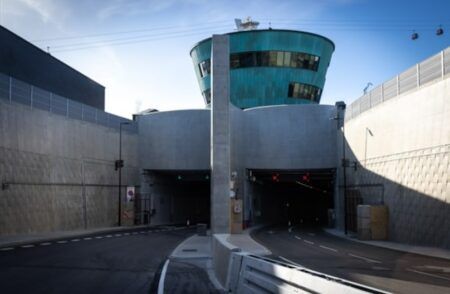Vancouver has become one of the first North American cities to adopt a traffic congestion management plan to improve traffic flow, reduce gridlock, and keep people and goods moving efficiently across the city and region.
As the third-largest metropolitan area in Canada, Vancouver is rapidly expanding, with a resultant pressure on its transportation network. Using new technologies such as GPS, smart streetlighting, cell phone technology and apps, the city’s new Congestion Management Strategy, as well as improving traffic flow, prioritizes safety and accessibility for all road users, including tackling ‘rat running’ by keeping traffic on arterials and not neighborhood side streets. To support the Congestion Management Strategy, Vancouver City Council has approved C$3.3m (US$2.4m) in both new investment and in alignment with existing programs under the City’s Transportation 2040 Plan, which was launched in 2012. City staff will track progress and report on the new Strategy and 2014 Plan to the council annually.
Launched by Vancouver’s Mayor, Gregor Robertson, the five goals supporting the new Congestion Strategy Management are:
Improve monitoring of traffic conditions and trends;
Improve road safety;
Ensure a smart and efficient transportation system;
Coordinate street use;
Prioritize the movement of people and goods.
The Congestion Management Strategy is the latest of several initiatives Robertson and the City Council have adopted to improve transportation options and road conditions for all users, including:
‘Moving toward Zero Traffic Fatalities’;
Supporting the ’10-Year Plan for Transit and Transportation’;
A new, more efficient parking management system;
Transportation 2040 Plan to reduce emissions, improve health, and have a positive effect on the environment;
Launching Mobi, the City’s bike-share program last summer.
“Vancouver’s economy is booming and with it, so are the demands on our streets and sidewalks,” said Robertson. “Whether you’re in your car, on the bus, biking downtown, or waiting to cross the street, congestion and traffic delays are frustrating. We want to reduce that frustration and keep people moving by being on the cutting edge of smart technology to improve traffic flow, no matter how you get around.”
Addressing the City Council, the Congestion Management Strategy’s author, Lon LaClaire, the city’s transportation director, said, “As our streets become more active, the same amount of traffic will move more slowly. When there’s too many vehicles on the road, you can’t have a functioning city. We still need to get people out of vehicles.”




